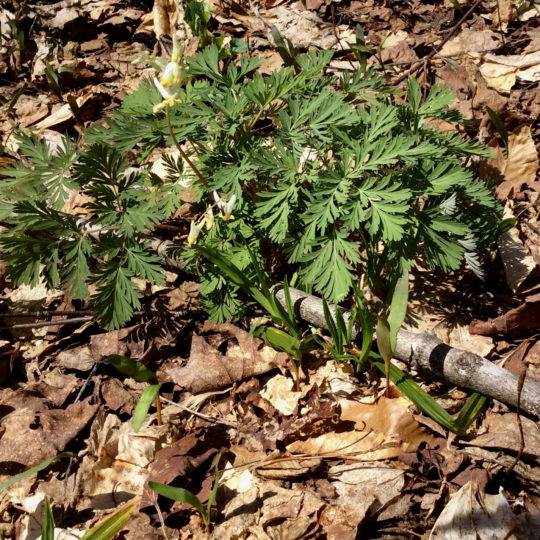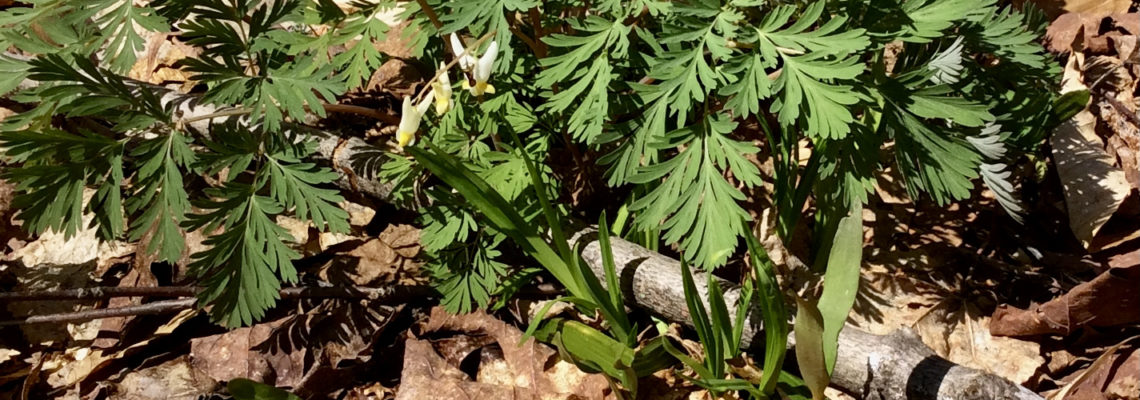
Displaying delicate fernlike leaves and white flowers resembling yellow-waisted pantaloons, hanging upside-down on a clothesline, it is one of Vermont’s early spring flowers. It flowers (Apr-May) just as bumblebees emerge after a long winter looking for nectar. The bumblebee’s proboscis is long enough to tap into the nectar, whereas the honey bee, having a much shorter proboscis, must look elsewhere. Known also as Dicentra cucullaria in the botanical world, it is closely related to Bleeding Heart, a common garden plant and to Squirrel Corn (Dicentra canadensis) another woodland wild flower. All are considered toxic if ingested in large quantities and may cause minor skin irritation.

